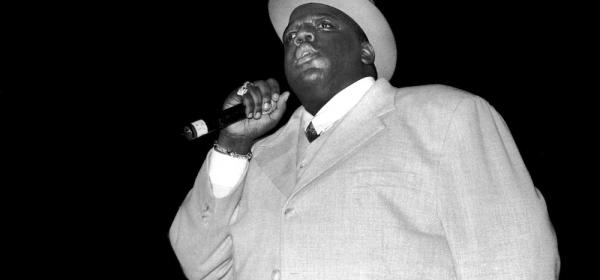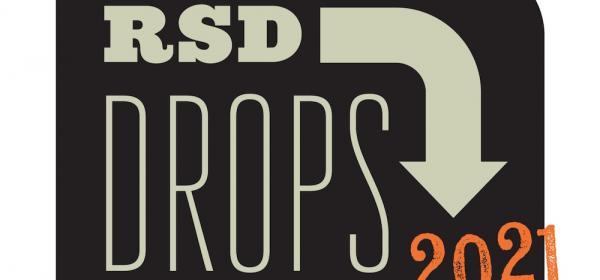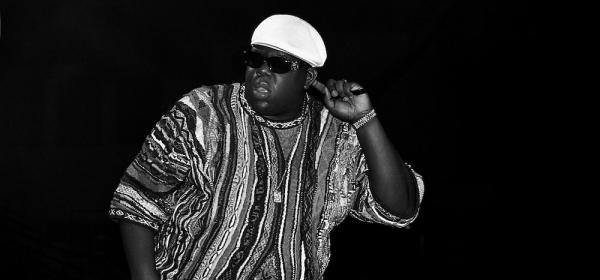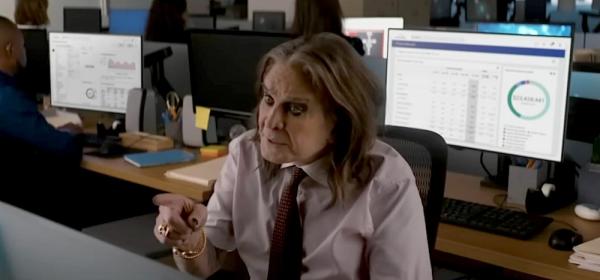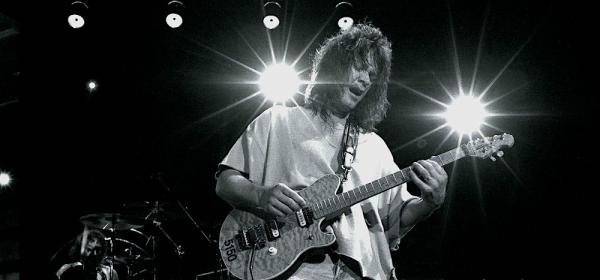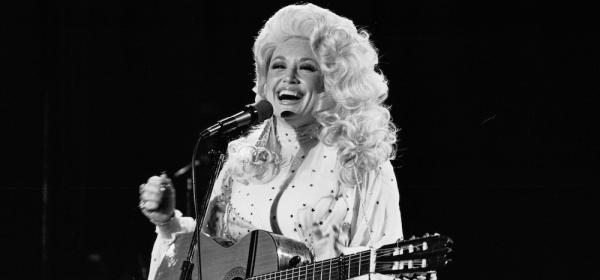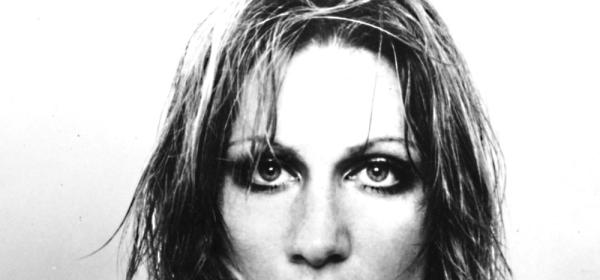
It took a while for Australia to fully embrace hip hop. In the early 1980s, the biggest rap hits came when pop groups like Blondie (“Rapture”) and Wham! (“Wham Rap! (Enjoy What You Do)”) embraced the genre, while landmark tracks like “The Message” and “White Lines” made less impact on the mainstream.
In the second half of the decade, American groups like Run-DMC (“Walk This Way”) and Salt ‘n’ Pepa (“Push It”) made inroads into the ARIA top 10, but the biggest rap hit was a comedy record, Morris Minor & The Majors’ number 2 single, “Stutter Rap (No Sleep Til Bedtime)”. In the 1990s, hip hop took off in a big way, even if Australia’s love for novelty and ultra-commercial rap took a while to get past.
1990
Something happened in early 1990 that had never happened before in Australia – a song with a rap in it reached number 1 on the singles chart. And that rap was performed by a cartoon cat. MC Skat Kat’s rhyme on Paula Abdul’s “Opposites Attract” was a sign of the times – hip hop was becoming part of the mainstream. Before the year was out, Australia had sent two actual rap songs to number 1: “U Can’t Touch This” by MC Hammer and Young MC’s year-old “Bust A Move”. The success of those two tracks summed up Australia’s taste for hip hop at that stage – we either liked rap songs with a familiar musical hook (like MC Hammer’s use of Rick James’s “Superfreak”) or with quotable lyrics that told a story (like Young MC’s jam for all the fellas).
1991
The floodgates now opened, hip hop (sometimes blended together with R&B or dance music) became a regular presence on the Australian chart. “Ice Ice Baby” by Vanilla Ice (which, despite his protestations to the contrary at the time, was based on the bassline to Queen and David Bowie’s “Under Pressure”) became another rap number 1 early in 1991. And making that track look like N.W.A., two more chart-toppers followed from The Simpsons (“Do The Bartman”) and Dimples D (the I Dream Of Jeannie theme-sampling “Sucker DJ”). Speaking of N.W.A., they spent January 1991 inside the ARIA top 40 with “100 Miles And Runnin’”, while Public Enemy placed two songs just outside the top 50 throughout the year. On a more commercial tip, rap made a solid showing among 1991’s highest-selling singles, with Heavy D & The Boyz, De La Soul, Icy Blu, 2 In A Room, C+C Music Factory and The KLF all featuring in the annual top 50.
1992
They might not have been comedy records, but there was still some novelty to the biggest hip hop tracks in 1992 – whether that be a song performed by two kids who wore their clothes backwards (“Jump” by Kris Kross) or a song about big butts (“Baby Got Back” by Sir Mix-a-lot) or a song with a title like “Let’s Talk About Sex”, which took Salt ‘n’ Pepa to number 1 early in the year. Rap was blended with Eurodance on hits by a growing number of he raps, she sings acts like 2 Unlimited (“Get Ready For This”) and Snap! (“Rhythm Is A Dancer”). Meanwhile, evidence that a well-known sample would still go far could be seen in hits by Naughty By Nature (“O.P.P.”) and Australia’s own Sound Unlimited Posse (“Kickin’ To The Undersound”).
1993
Hip hop might have been big in 1993, but reggae was bigger. One song that combined the two was “Informer” by Snow, which was another chart-topper. Also hitting number 1 (and finally landing a hit in Australia) was Grammy-winning duo DJ Jazzy Jeff & The Fresh Prince with “Boom! Shake The Room”. At the other end of the top 50, Cypress Hill ventured onto the chart with “Insane In The Brain”, the first of three charting singles from Black Sunday. Proof that Australia began to embrace a more diverse array of hip-hop artists was borne out by the chart success of everyone from Arrested Development to Bell Biv DeVoe to Stereo MCs. Even boy bands were rapping, with East 17 making their presence felt with “House Of Love” and “Deep”.
1994
They might not have reached number 1 in 1994, but Salt ‘n’ Pepa enjoyed back-to-back number 2 hits that year with “Shoop” and “Whatta Man” (alongside En Vogue). Another “veteran” act, Public Enemy finally landed a hit in Australia, with “Give It Up” making the top 20. At the same time, newcomers Snoop Doggy Dogg (“What’s My Name?”), as he called himself at that point, and Warren G (“Regulate”) introduced Australia to the G funk sound – and the regionality of the American scene. 1994 probably wasn’t hip hop’s strongest year, but any fears Australia’s emerging love for rap was dying down would quickly be disproved…
1995
For the first time in Australian music history, the highest-selling single of the year was a hip hop song. Sampling Stevie Wonder’s “Pastime Paradise”, Coolio’s “Gangsta’s Paradise” spent a mammoth 13 weeks at number 1 – a tally still only beaten by two songs (ABBA’s “Fernando” and “Shape Of You” by Ed Sheeran). Aside from the Dangerous Minds hit, 1995 was also the year TLC took off in Australia, with “Waterfalls” reaching the top 5. Another group that blended rap with other genres, The Outhere Brothers, also visited the top 5 - on two occasions, with “Don’t Stop (Wiggle Wiggle)” and “Boom Boom Boom”.
1996
In 1996, Fugees almost repeated Coolio’s feat, but in the end, the trio’s cover of “Killing Me Softly” came in as the year’s second-highest-selling single (behind “Macarena”). And unlike in previous years when some major American hip hop hits had missed the mark in Australia, a slew of more credible rap tracks performed well locally, including Bone Thugs-N-Harmony’s “Tha Crossroads”, “Hey Lover” by LL Cool J (the biggest solo hit of his career here) and, just prior to his untimely death, 2Pac featuring Dr Dre’s “California Love”. The success of those songs indicated Australia was becoming more discerning when it came to hip-hop, with cheesy gimmicks or instantly recognisable hooks no longer necessary for major sales. That said, Warren G’s revamp of “What’s Love Got To Do With It” was the ninth biggest single of the year.
1997
It was the year the hip hop world lost another major player, and 1997 was also the year The Notorious B.I.G.’s music connected locally, with the posthumous release “Mo’ Money Mo’ Problems” reaching the top 10 and the two-year-old collaboration with 2Pac, “Runnin’”, narrowly missing doing the same. The year’s biggest hip hop hit was tribute song “I’ll Be Missing You” by Biggie’s label boss, Puff Daddy, and widow, Faith Evans, with a little help from 112. On a commercial tip, Will Smith emerged as a solo star thanks to the chart-topping theme from Men In Black, while Coolio was back with the Pachelbel’s Canon-inspired “C U When U Get There” and Warren G was at it again with his take on “I Shot The Sheriff”.
The 25th Anniversary Edition of The Notorious B.I.G.’s Ready To Die album has just been released as a 7" singles vinyl set, available here.
1998
Better late than never. In 1998, enduring hip hop acts Run-DMC and Beastie Boys achieved career bests on the ARIA chart. In the case of the former, the Jason Nevins remix of “It’s Like That” saw them reach number 1 and earn the second biggest hit of the year. While for Beastie Boys, “Intergalactic” returned them into the top 50 for the first time since 1987’s “(You Gotta) Fight For Your Right (To Party!)” (which was back in the chart as well thanks to a cover by N.Y.C.C.). Another song dating back to the 1980s became the latest classic to provide its hook for a major hip hop hit, with Pras making use of “Islands In The Stream” for “Ghetto Superstar (That Is What You Are)”. Will Smith delved back even further, sampling Sister Sledge’s 1979 song “He’s The Greatest Dancer” for “Gettin’ Jiggy Wit It”, while other big hip hop singles came from P.M. Dawn, Pappa Bear and Puff Daddy featuring Jimmy Page.
1999
As the 1990s drew to a close, two hip hop performers who would become music megastars in the following decade dipped their toe into the ARIA top 50 for the first time. With the attention-grabbing “My Name Is”, Eminem started as he meant to proceed, while Jay-Z’s Annie soundtrack-sampling “Hard Knock Life” established his knack of thinking outside the box. Alongside hits that year from TLC (“No Scrubs”), Lauryn Hill (“Doo Wop (That Thing)”) and Will Smith (“Wild Wild West”), not to mention smaller successes from rappers like Mase, Puffy Daddy and A+, the genre was as popular as it had ever been in Australia, setting the stage for an even more dominant scene in the 2000s.


